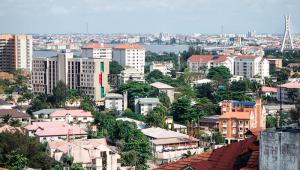By Nick Mann | 15 May 2013
The US will post its smallest budget deficit since 2008 this year as increased revenues boost federal government coffers, according to the Congressional Budget Office.
Publishing updated budget predictions for 2013 to 2023 yesterday, the CBO, which provides the US Congress with budgetary information and advice, said it expected the deficit for the fiscal year ending September to be $642bn. This is $203bn less than the $845bn projected by the CBO just three months ago. Last week, the office estimated the deficit for the seven months to the end of April was already $231bn down on the same period the previous year.
If the latest forecast is achieved, the deficit for 2013 will amount to 4% of gross domestic product, down from 7% last year and less than half the 10.1% shortfall recorded in 2009.
According to the CBO’s baseline forecasts, which are based on no further tax or spending law changes, the picture will improve further over the next two years as revenues rise more rapidly than spending. It expects the deficit to fall further to 3.4% of GDP next year and 2.1% in 2015.
However, the deficit is then projected to begin a steady increase, peaking at 3.6% of GDP in 2022. This is ‘because of the pressures of an ageing population, rising health care costs, an expansion of federal subsidies for health insurance, and growing interest payments on federal debt’, the CBO explained.
The total budget deficit for 2014 to 2023 is estimated to be $6.3 trillion, $618bn less than forecast in February as a result of expected reductions in government programmes such Social Security, Medicare and Medicaid.
This slightly improves the OBS projection for public debt in 2023, now forecast to be equivalent to 74% of GDP, and not the 77% predicted three months ago.
But the US debt-to-GDP ratio is expected to remain above 70% throughout the forecast period – well above the 39% average recorded over the past 40 years.
The CBO warned that this high and rising debt would have ‘serious negative consequences’ for the US economy. ‘When interest rates return to higher (more typical) levels, federal spending on interest payments would increase substantially,’ it said.
‘Moreover, because federal borrowing reduces national saving, over time the capital stock would be smaller and total wages would be lower than they would be if the debt was reduced. In addition, lawmakers would have less flexibility than they would have if debt levels were lower to use tax and spending policy to respond to unexpected challenges.
‘Finally, a large debt increases the risk of a fiscal crisis, during which investors would lose so much confidence in the government’s ability to manage its budget that the government would be unable to borrow at affordable rates.’
The CBO projections come as the deal reached by Congress in February to suspend the debt ceiling nears its end on May 18. Failure to agree a long-term increase in the borrowing limit could lead to the US defaulting on its debt, but the CBO said that the use of ‘extraordinary measures’ could put off the need for any deal on increasing the ceiling until October or November.













